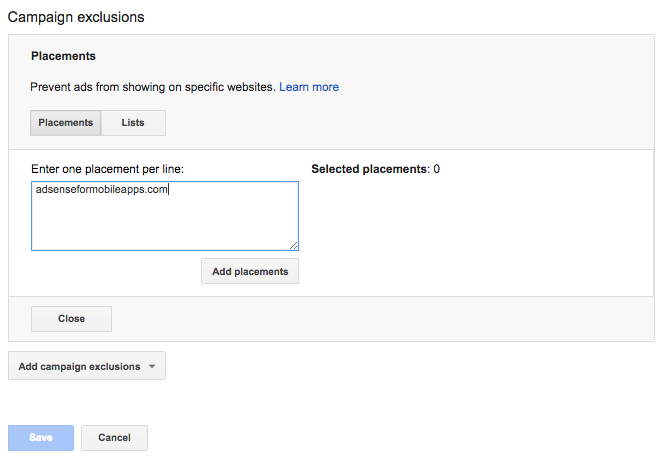People are no longer shocked when they see an email with their name in the headline from a brand they may not recognize. Seeing ads that are relevant to your interests isn’t as creepy anymore, but almost expected. In fact, 74% percent of online consumers get frustrated with companies when content has nothing to do with their interests, and one-third of marketers see personalization as the most important capability to the future of marketing, according to an Adobe study.
Personalization has become essential for businesses to compete with other brands online. We live in a world where we can order our go-to Starbucks latte through the app and have our red holiday cup marked with our name on it before we even arrive at the store – and people expect exactly the same kind of experience online.
With paid ads, personalization can seem challenging. How can you ensure your ads are reaching the right people with appealing messages aligned with their interests? How can you scale to personalize each shopper in a pool of thousands of online consumers? How do you even know if you’re reaching the right audience, at the right time, with the right message?
These 7 tips will take the mystery out of paid ad personalization, in turn making your life as a marketer a whole lot easier!
#1: Utilize Customer Match, Custom Audiences, and Targeted Audiences
What better place to start than with a list of contacts you already have? Custom Audiences on Facebook and Targeted Audiences on Twitter have been around for quite a few months now. They both allow you to upload a list of emails or phone numbers to the ad platform to show your ads to that targeted group of people. Now marketers can do the same thing through Google’s Customer Match.
Whether it be via YouTube ads, Gmail Sponsored Promotions, or through the good old search network, you can upload your list of leads that recently downloaded an e-book or subscribed to your blog, and deliver personalized ads to these specific people. This is insanely powerful because it shows how search and display are becoming more like email marketing by targeting individuals rather than keywords or websites. Just image you had a list of webinar attendees. Instead of showing these people regular old ads, you can show them ads relevant to the content consumed via the webinar and keep your ad copy and imagery in-line with their interests and needs.
#2: Implement Geo Customizers in Your Ad Copy
These babies are pretty brand-spanking new and we’ve already found them to be quite successful at WordStream. They work similar to ad customizers where your ads are automatically updated, but geo-customizers update your ads based on a searcher’s physical location or a location of interest. Naturally, these are most useful for local advertisers, but all advertisers shouldn’t ignore the opportunity to find creative ways to appeal to a searcher’s location.
WordStream’s Senior Paid Search Strategist Nic D’Amato recently tested out this new feature with his client POP Yachts, and during a typically slow point in the season his client saw a 30% increase in click-through rate (CTR), a 13% increase in click conversion rate, and a 50% decrease in CPA (cost per acquisition) over a 2 week period. Pretty impressive!
Nic clearly proved that the benefits of these babies are well-worth it.
“I recommend geo ad customizers for any advertiser with local products or special offers in any city,” says Nic. “It will give you an edge on making your ads localized and more pertinent to a user, save time from updating ads so often, drastically improve ad performance, and help capture customers further down the funnel.”
Check out Nic’s post to get all the details on setting these up.
#3: Remarket to Non-Converters on Search Through Social
Oftentimes people start their buying journey using Google. Whether it be through high-intent searches like “Buy pair of women’s Warby Parker prescription sunglasses” or just actual questions to problems that require help like “How do I manage my PPC bids?”
Although even with high-intent searches where people are in the purchasing mindset, it can be easy to lose focus, with everything from new Snapchat notifications to work emails buzzing into our iPhones competing for our attention. What marketers need to do is create a full-circle, personalized experience where they’re remarketing to site visitors through social.
For instance, let’s say someone visits the product page for a specific style of Warby Parker sunglasses. The advertiser then should follow that user around Facebook reminding them of their interest in that style.
This strategy works wonders because rather than remarketing to every person on your site, you’re focusing on a smaller percentage that’s much more likely to buy. There’s also the benefit of being able to get much more granular with your targeting capabilities on Facebook or Twitter. For instance, you can remarket to people who came to your site through search, are within a certain age range, and have specific job titles, but I’ll get into that more in my next point…
#4: Make Use of Facebook and Twitter’s Targeting Capabilities
Did you know that you can target “fit moms,” interested in musical theatre, who have college degrees from Harvard University, and live in NYC condos over 2,999 square feet? The level of granularity you can get with targeting via demographics, interests, and behaviors within both Facebook and Twitter is astounding.
Through self-provided information and third-party data providers, both platforms have a solid understanding of who their users are. It’s actually quite creepy from a user standpoint, but for you – the advertiser – it opens up ample opportunities to appeal to your target audience.
When creating demographic audiences in each social platform make sure to do the following things:
- Have a thorough understanding of your target audience.
- Layer targeting options upon each other until you land a reasonably sized audience to target based on your allotted budget.
- Create ads that speak to that specific audience.
#5: Use Targeting Tools Through the Google Display Network
The Google Display Network (GDN) allows your ads to be displayed to users when they’re browsing around on various websites. The thing is, the GDN is huge; it reaches over 90% of global internet users and expands across 2 million sites, so you can image how it might be difficult to personalize your strategy.
In order to use your budget wisely, the GDN has a few categories to ensure your speaking the right people on the right websites including:
- Contextual targeting: This allows you to only show ads on sites related to your keywords
- Placement targeting: Choose the specific websites where you want your ads to be shown to ensure they’re reaching relevant people (or exclude irrelevant websites).
- Remarketing: Show ads to people who have already visited (or purchased from) your site!
- Interest Categories: Show ads based on what your users are interested in. No, the targeting capabilities are not quite up to par with those on Facebook, but you can use features like TV-like affinity audiences to get more granular.
- Topic Targeting: Choose from Google’s list of topics, for example “Autos and Vehicles,” to target those interested in those products.
- Demographic Targeting: Lastly, aside from languages and locations, Google allows you to target by gender, parental status, and age range.
Yes, these options are limited compared to our social networking offerings, but remember that you can layer these categories to further define your target audience. For instance, you can use placements with remarketing to only remarket to people who visit specific websites.
#6: Speak to the User Throughout the Entire Search Experience
This one might seem mind-numbingly obvious, but you’d be surprised at how many marketers fail to put themselves in the shoes of the searcher and rather chose to focus on bragging about their business. Guess what? The searcher doesn’t care that your law services are the “best in town.” Anyone can say that. They care about fixing their problem with a trustworthy and reliable solution.
By nature we are inherently selfish, which creates a problem; if the advertiser and the consumer are both selfish, then each of their goals are not likely to be achieved, right? Wrong – the advertiser just needs to be able to recognize this by putting their ego aside and speaking directly to the user’s needs throughout the entire buying journey. Your creative should be gracefully written in the second person, and be focused on addressing your consumers’ problems and how you can fix them.
Take a look at the two ads below, each of which received roughly the same number of ad impressions with an average positon between one and two. Which one do you think received the higher CTR?
Ad A won by a landslide with a CTR of 62.5%, while ad B had a CTR of 13%. While both CTR’s are good, ad A went above and beyond by speaking directly to the searcher, addressing them as “you” and immediately reassuring them that customer service is their top priority.
David Ogilvy, widely regarded as the “Father of Advertising,” said it best: “If you can’t turn yourself into a consumer, you probably shouldn’t be in the advertising business at all.”
#7: Use RLSA’s with a Broader Set of Keywords to Re-Engage Past Searchers
RLSA’s, or remarketing lists for search ads, might sound intimidating, but they’re really quite simple! They work similarly to standard remarketing, but rather than following website visitors around the web with banner and sidebar ads, they show your ads to prior site visitors when they’re searching on Google. This allows the advertiser to create a personalized search experience based on their remarketing lists.
For instance, let’s say you have a remarketing audience for people who visited your product page for long women’s grey trench coats; rather than targeting longer-tailed keywords like “grey winter trench coat for women” you can instead bid on broad terms like “coat” and “winter coat” to show your ads to these searchers since you already know they’re interested in your product. This allows you to create a more personalized search experience on Google based on what you know your audience is already interested in.









0 Comments